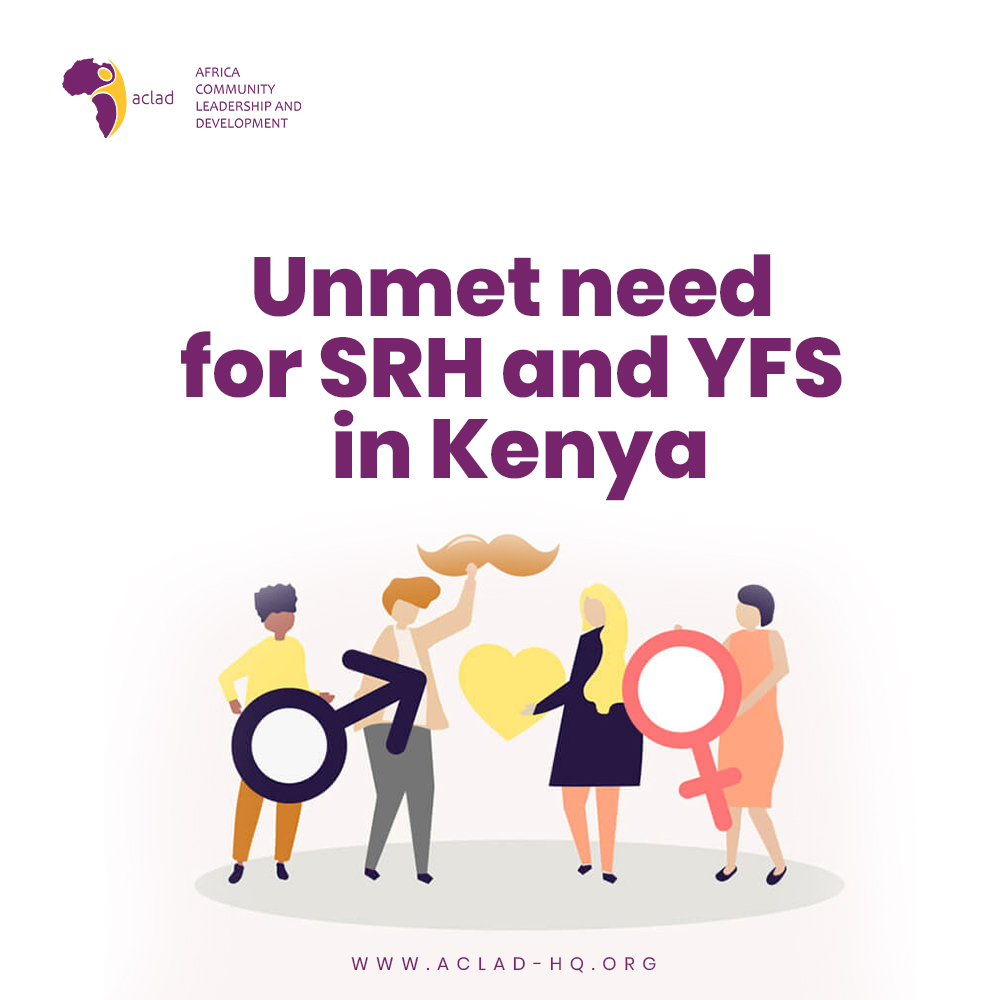Unmet need for SRH and YFS in Kenya

The United Nations Population Fund acknowledged that globally, approximately 16 million girls aged between 15 and 19 years get pregnant every year[1]. This includes those who for one reason or another engage in child marriages. In Kenya, child marriages prevalence is estimated at 25-30% widespread especially in the rural areas. This, coupled with a high prevalence of adolescent pregnancy and low access to and use of adolescent sexual reproductive health (SRH) services as well as a lack of youth friendly services in Kenyan healthcare facilities makes tackling adolescent SRH issues a great challenge. To address this dilemma, the Ministry of Health drafted the National Adolescent Sexual and Reproductive Health policy in 2015. Despite the enactment of this policy, adolescents in Kenya continue to face challenges with their health and face barriers accessing information and services regarding their sexual and reproductive health.
The unmet need for family planning and adolescent SRH, coupled with low contraceptive prevalence rates and early sexual debut have been associated with teenage pregnancies. Unintended or unplanned pregnancies may be terminated through unsafe abortions, which further complicate adolescent SRH outcomes. Studies have documented that whether adolescent pregnancy is intended or not, this increases the risk of maternal mortality and ill health, including complications arising from unsafe abortion, prolonged labor and delivery, and postnatal infections[2]. Contraceptives, one of the aspects of SRH, offer both direct and indirect benefits to adolescents which include but are not limited to preventing unintended pregnancies, reducing incidences of abortion and lowering the burden of maternal mortality and sicknesses resulting from pregnancy and childbirth complications.
Despite the many benefits of adolescent contraceptives, their use is lowest compared to other sexually active age groups[3]. For Kenya, deterrents of adolescent uptake of contraceptives include the adolescents’ own lack of awareness, misconceptions and issues of confidentiality both at the health facilities (partly due to lack of youth friendly health facilities) and at home, as well as parental consent for their use as this is seen as encouraging promiscuity. In our work in Western Kenya, we have found that girls and young women are becoming pregnant at times not of their choosing, leading to detrimental social, emotional, and physical outcomes for both mother and child, some of which include obstructed labour, obstetric fistula, stillbirth, low infant weight, premature birth and sometimes maternal mortality. When early marriages and teenage pregnancies are prevented, then the young girls are encouraged to stay in school, learn and are empowered with knowledge and skills in their various areas of interest, they become positive influencers in their families and communities, thereby creating a better society for generations to come. We are also trying to bridge the gap of lack of knowledge of adolescent SRH by teaching about sexual and reproductive health and rights to those adolescents who take part in our Chagua Maisha life skills program.
Catherine Muteithia
ACLAD Research and Communications Assistant
[1] UNFPA. (2015) Girlhood, not motherhood: preventing adolescent pregnancy. United Nations Population Fund. New York. https://www.unfpa.org/sites/default/files/pub-pdf/Girlhood_not_motherhood_final_web.pdf.
[2] Nove, A., Matthews, Z., Neal, S., Camacho, A.V. Maternal mortality in adolescents compared with women of other ages: evidence from 144 countries. The Lancet Global Health. 2(3): e155–e164. pmid:25102848
[3] UNFPA. (2015) Girlhood, not motherhood: preventing adolescent pregnancy. United Nations Population Fund. New York. https://www.unfpa.org/sites/default/files/pub-pdf/Girlhood_not_motherhood_final_web.pdf.
